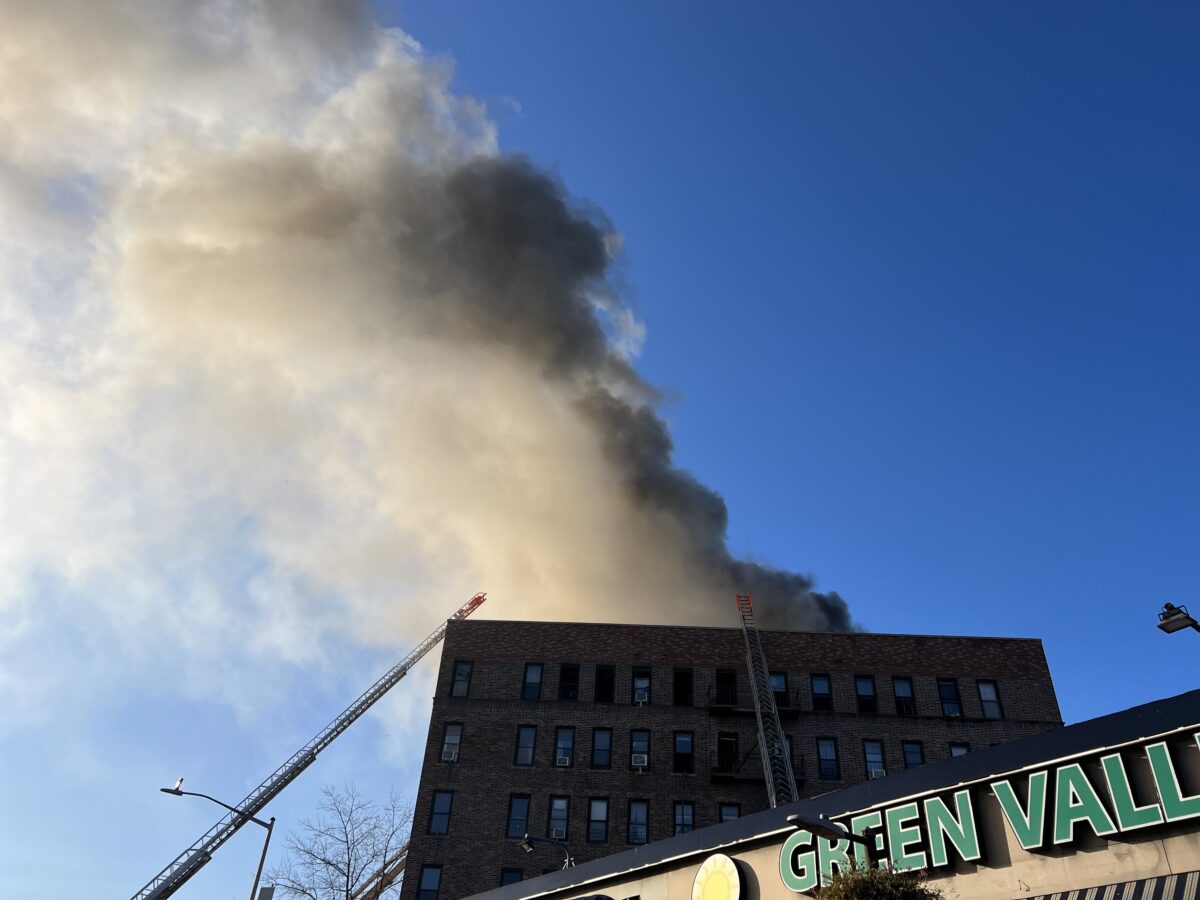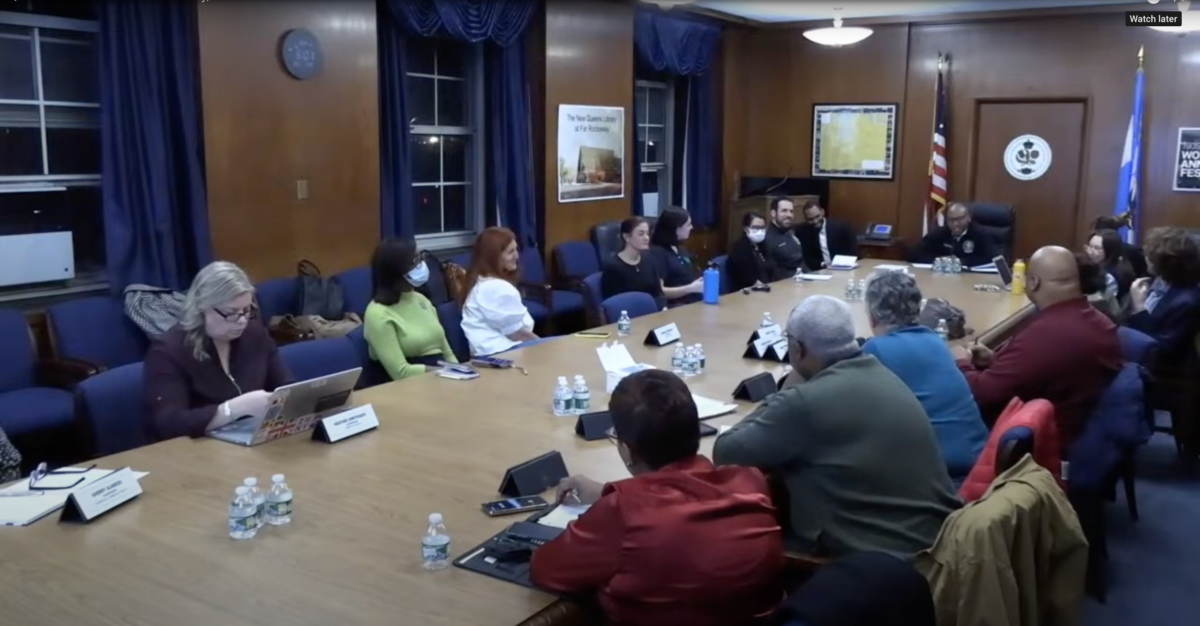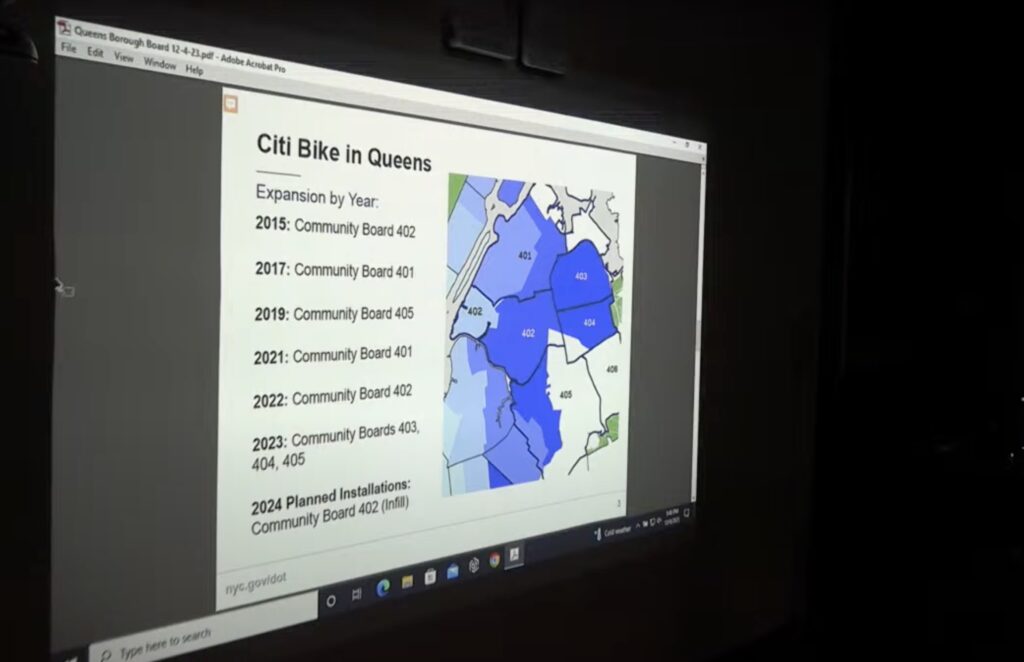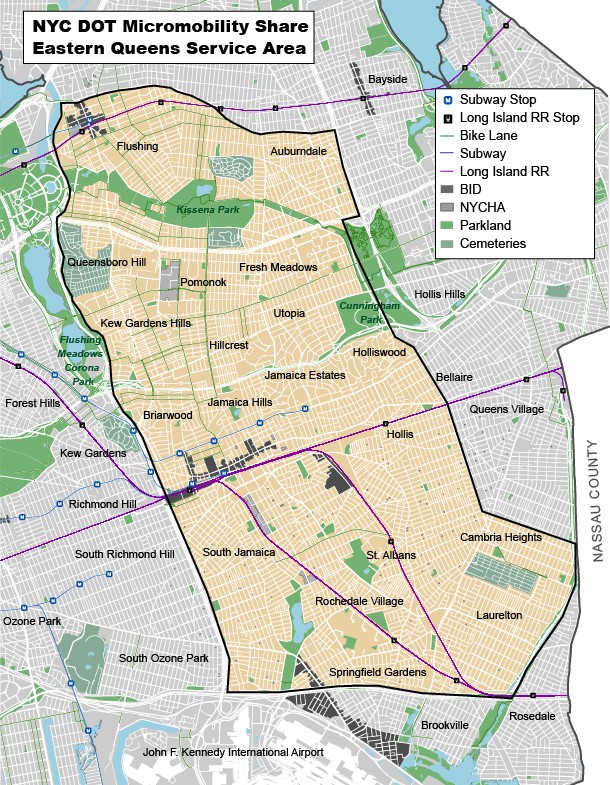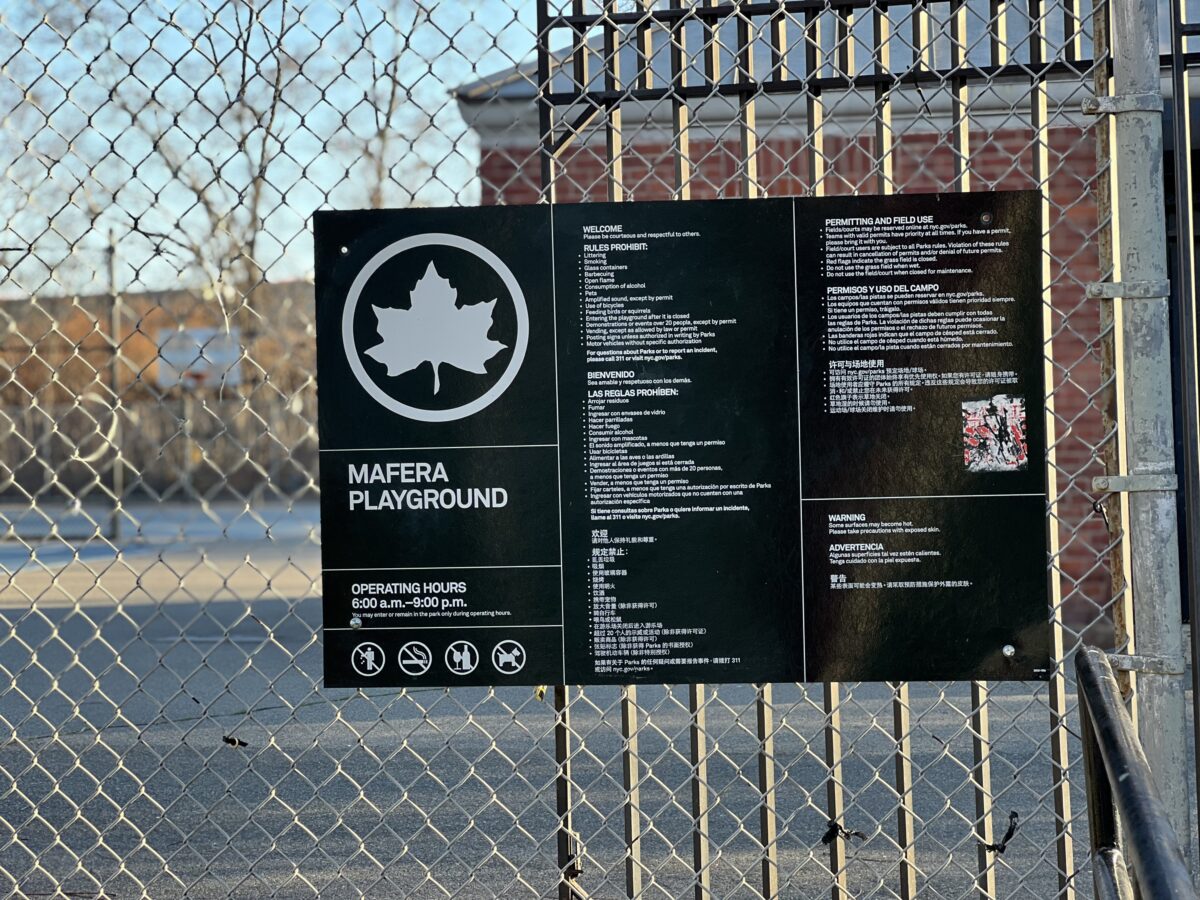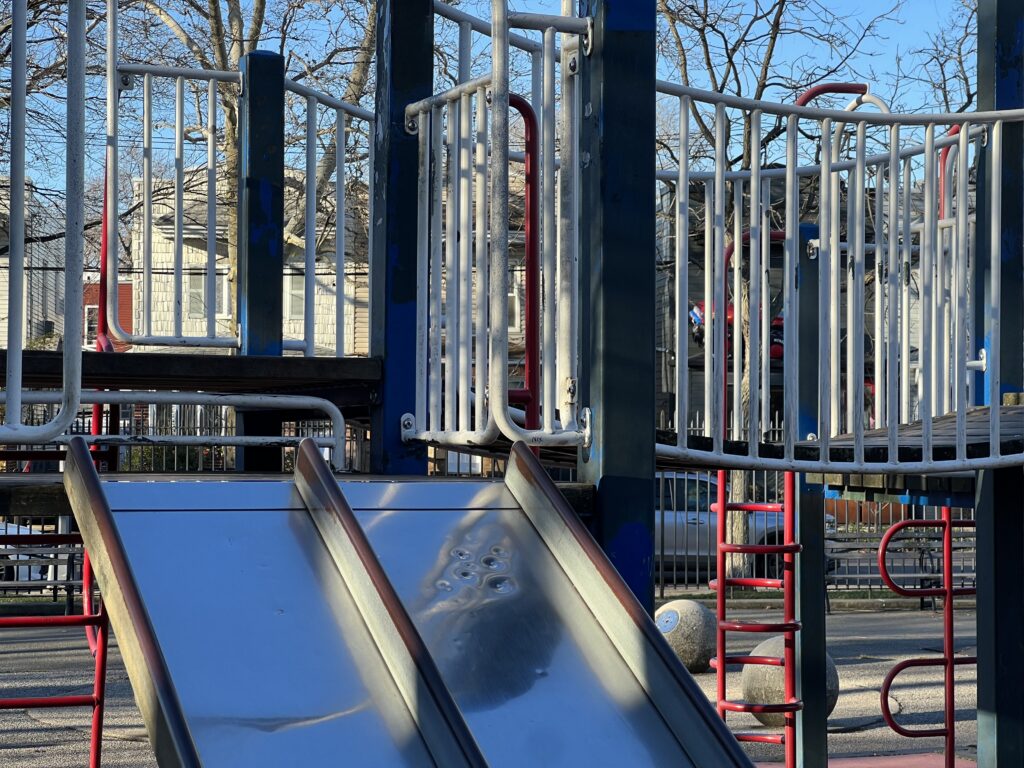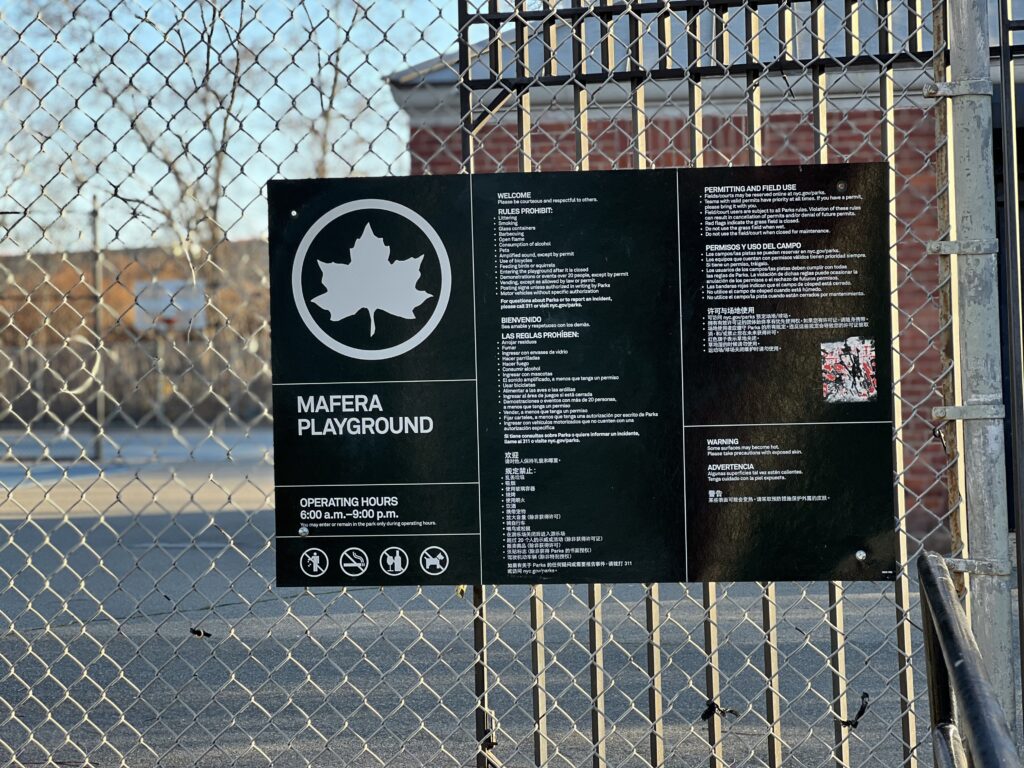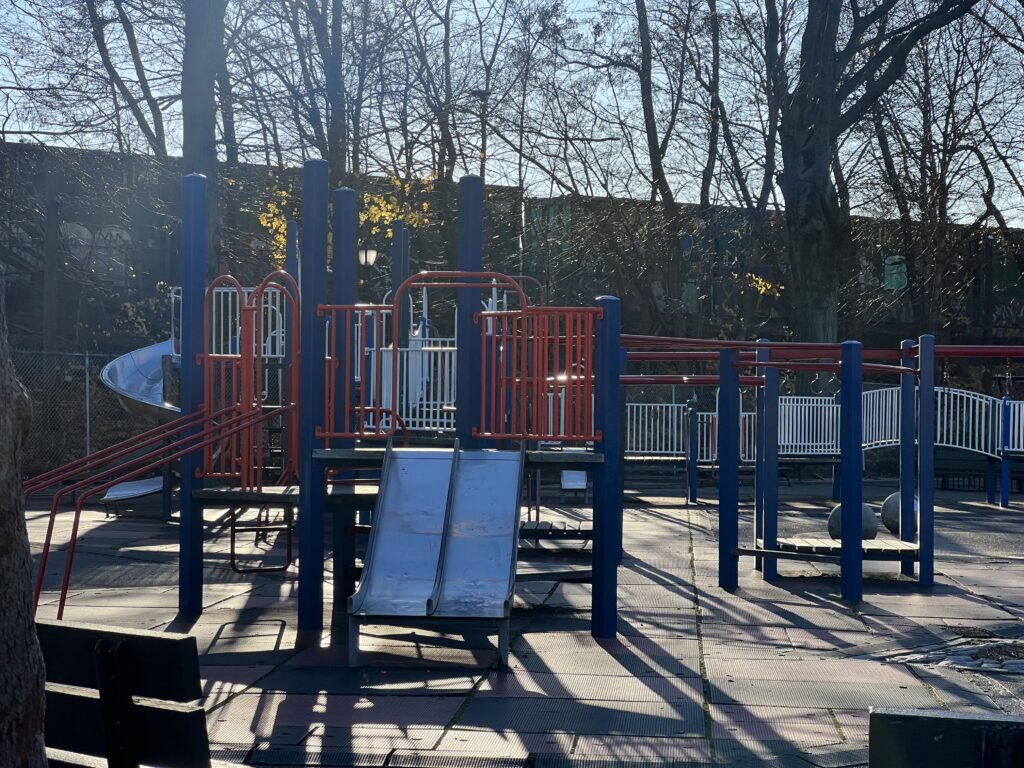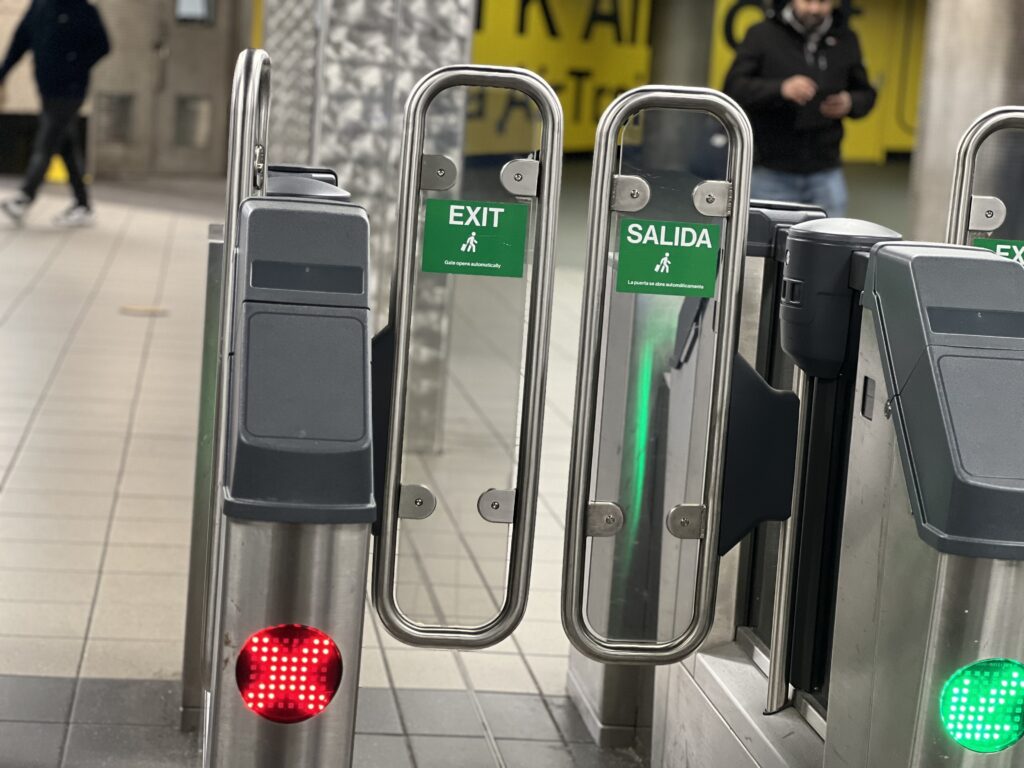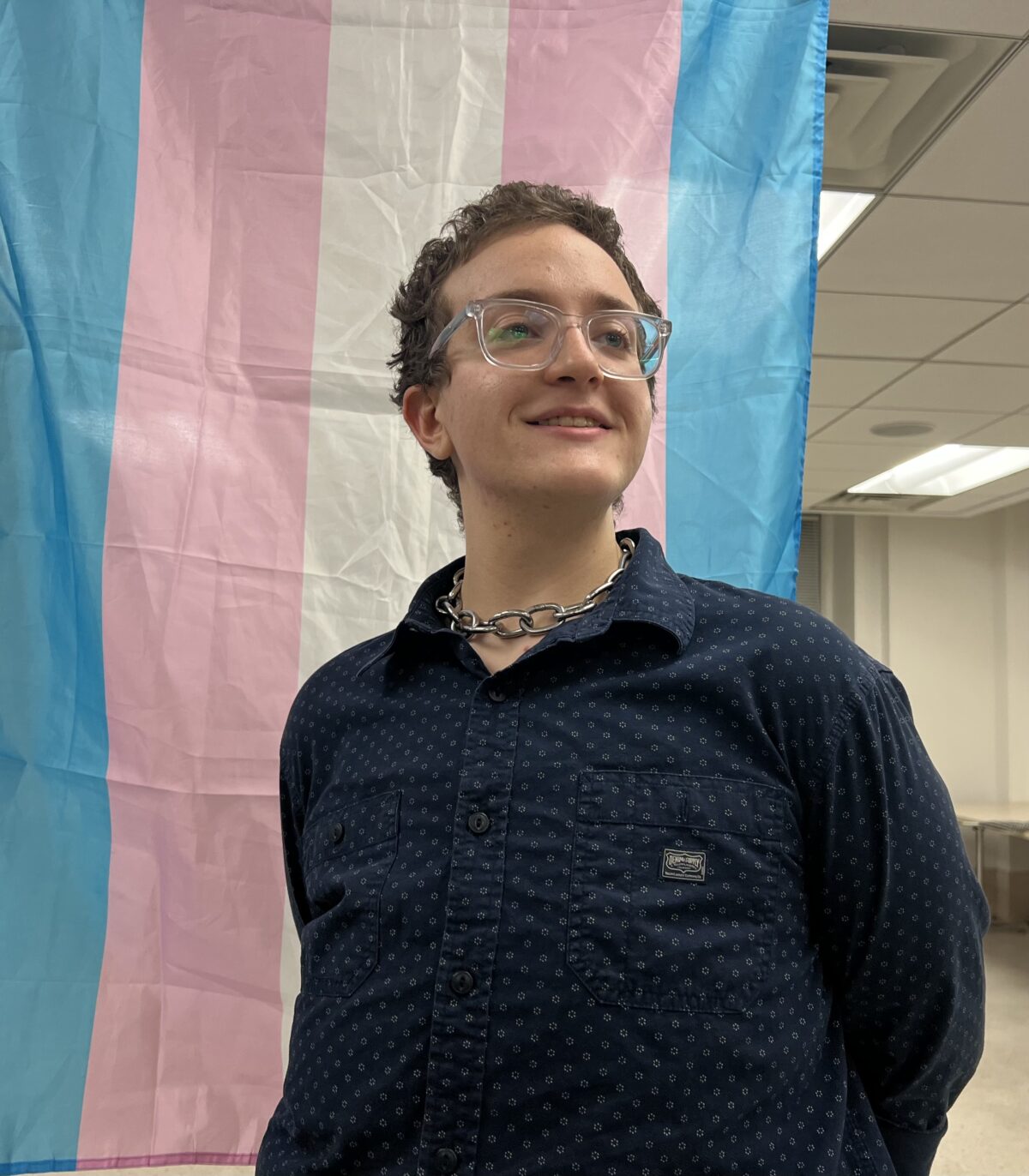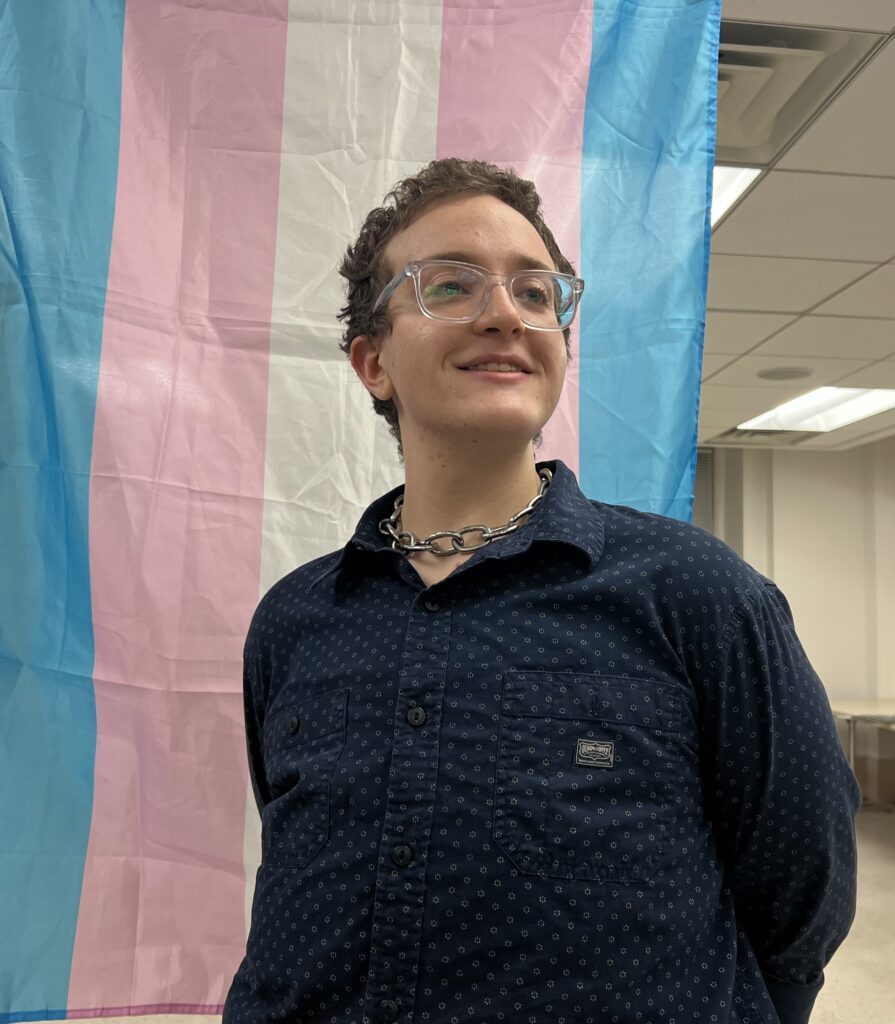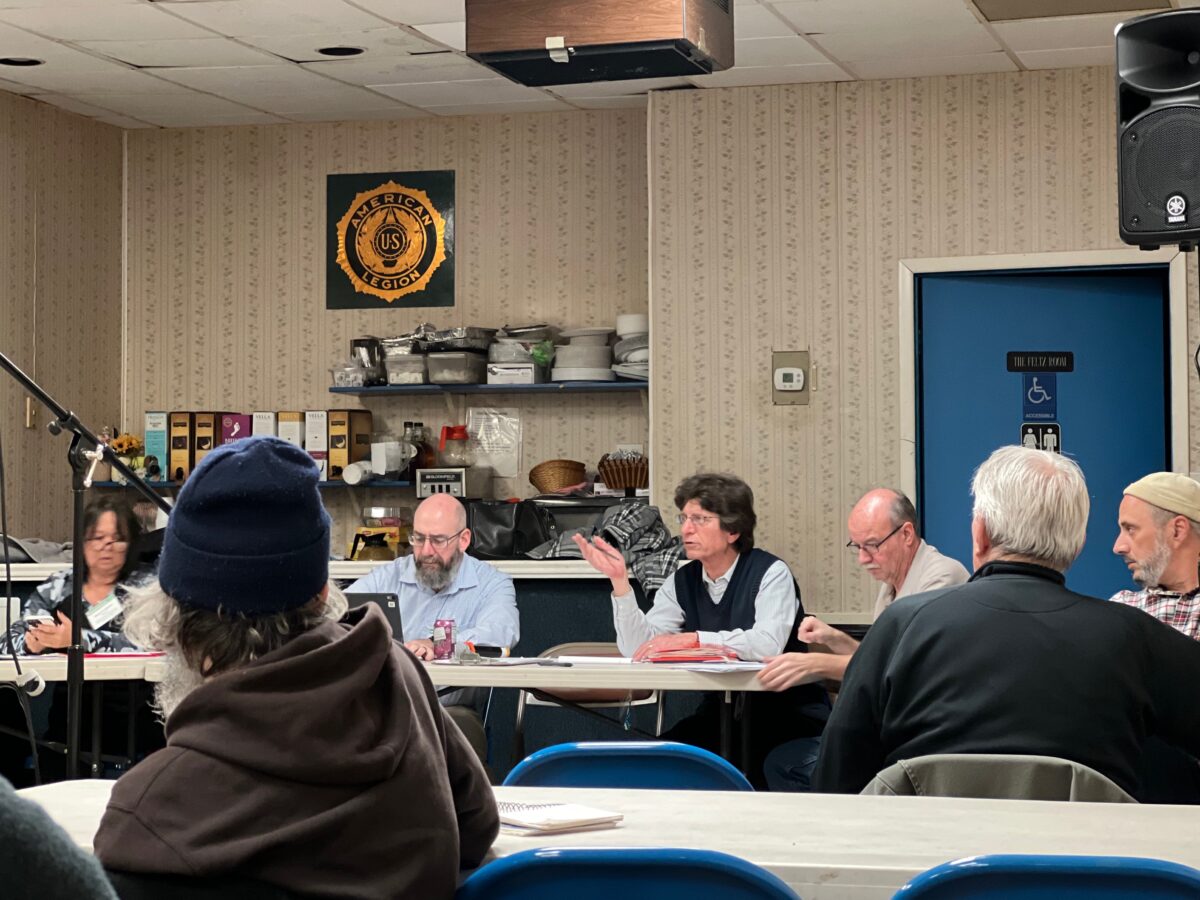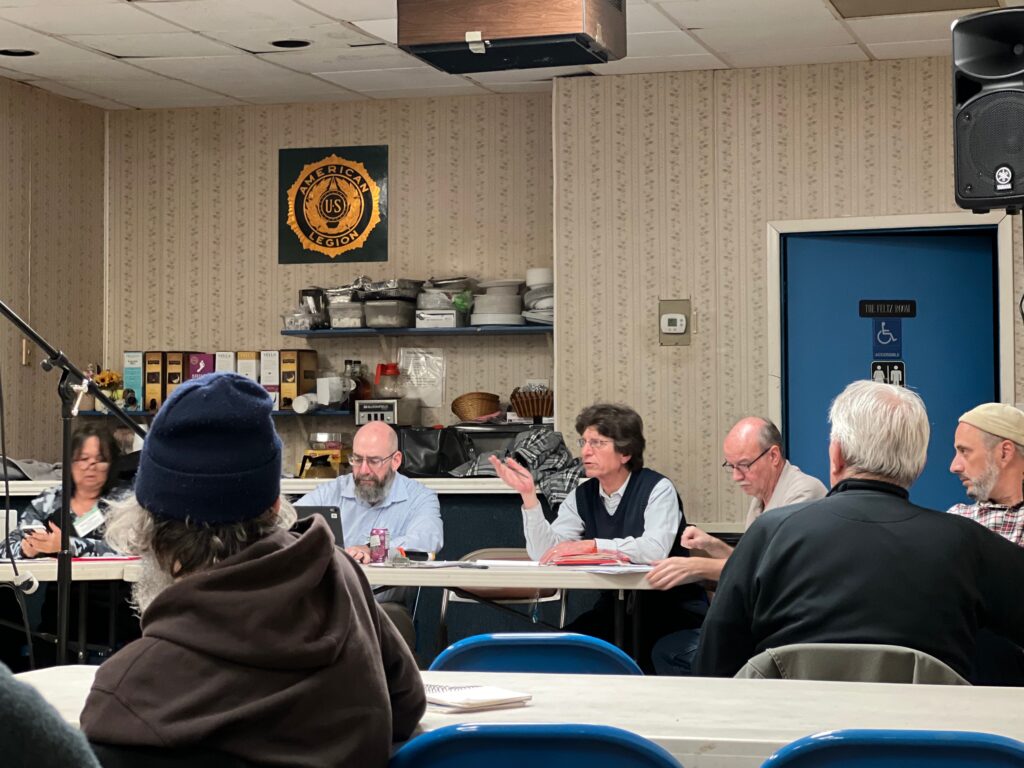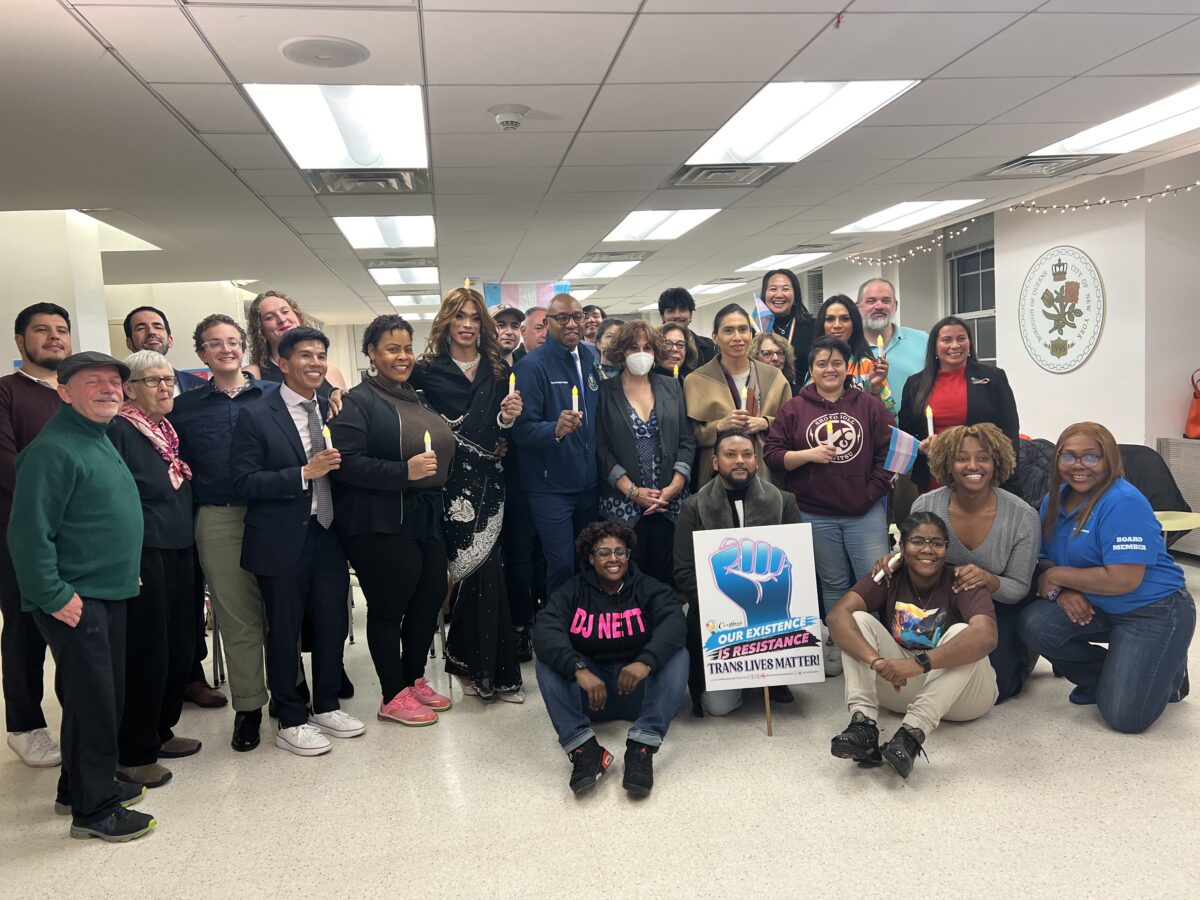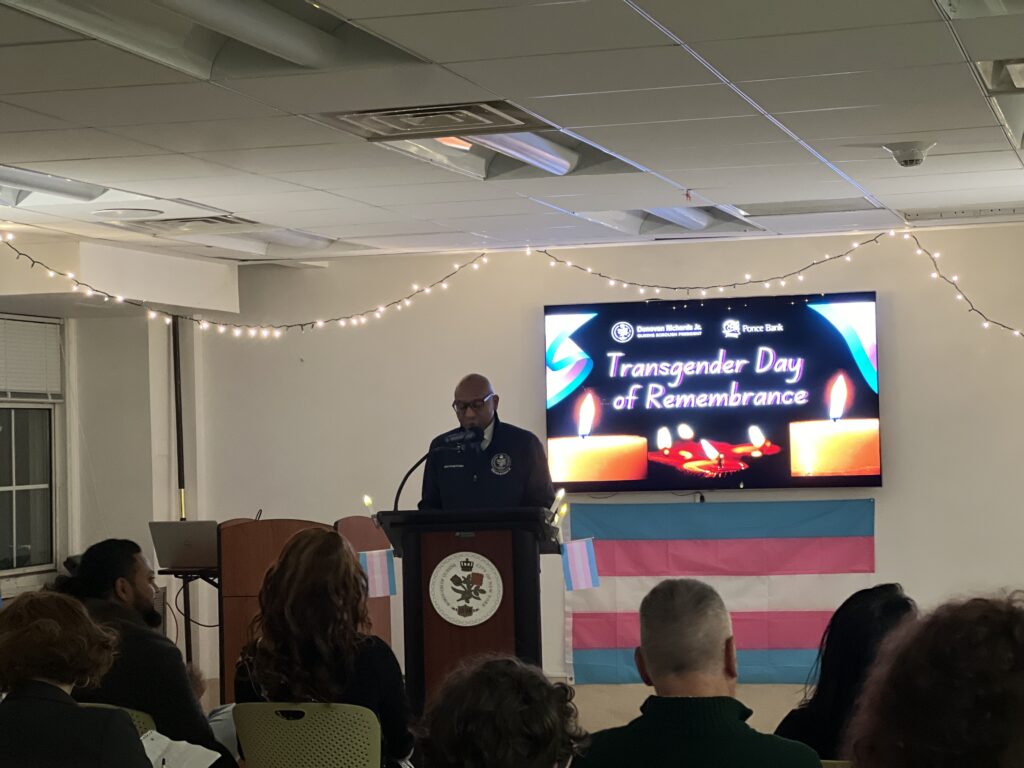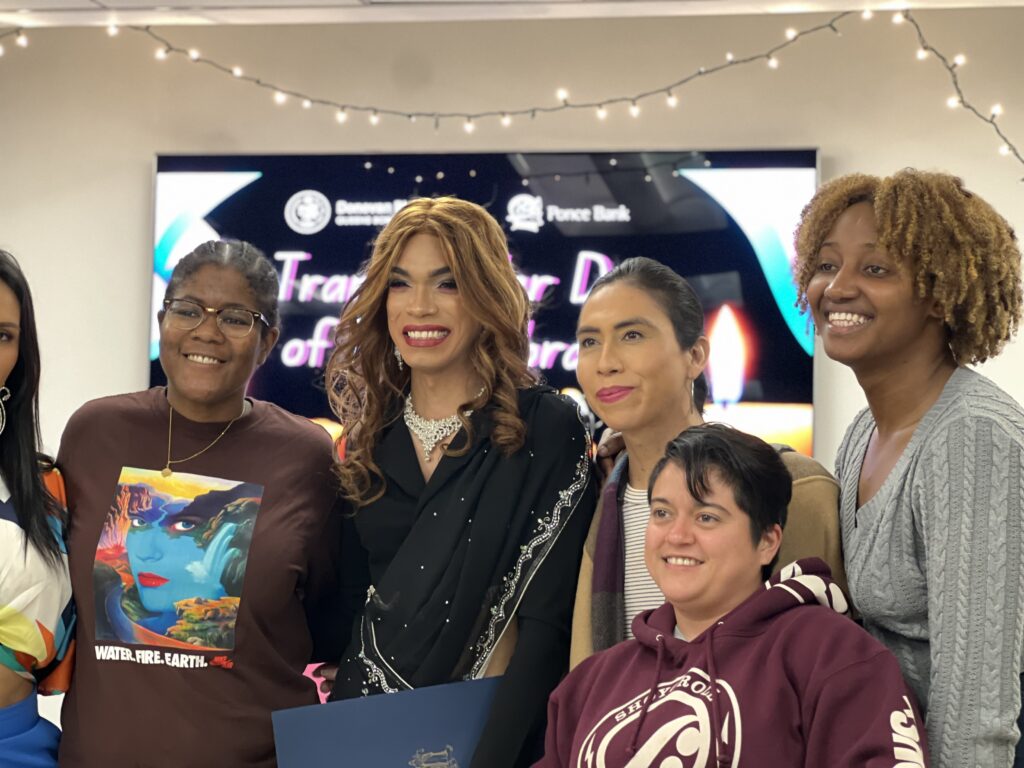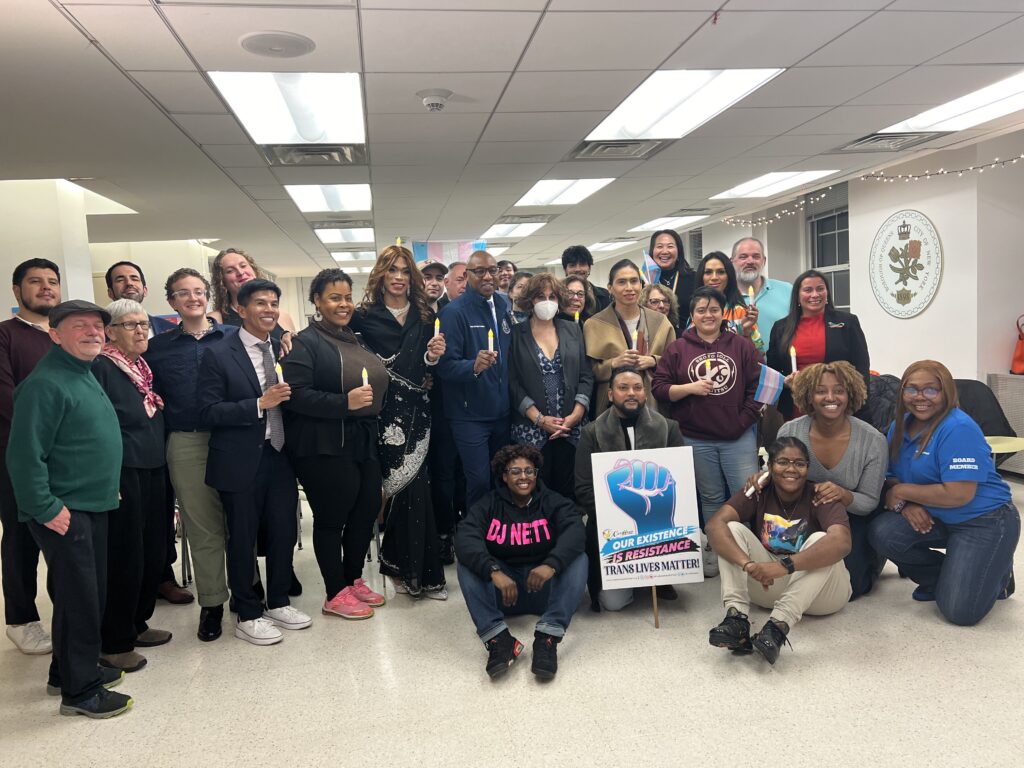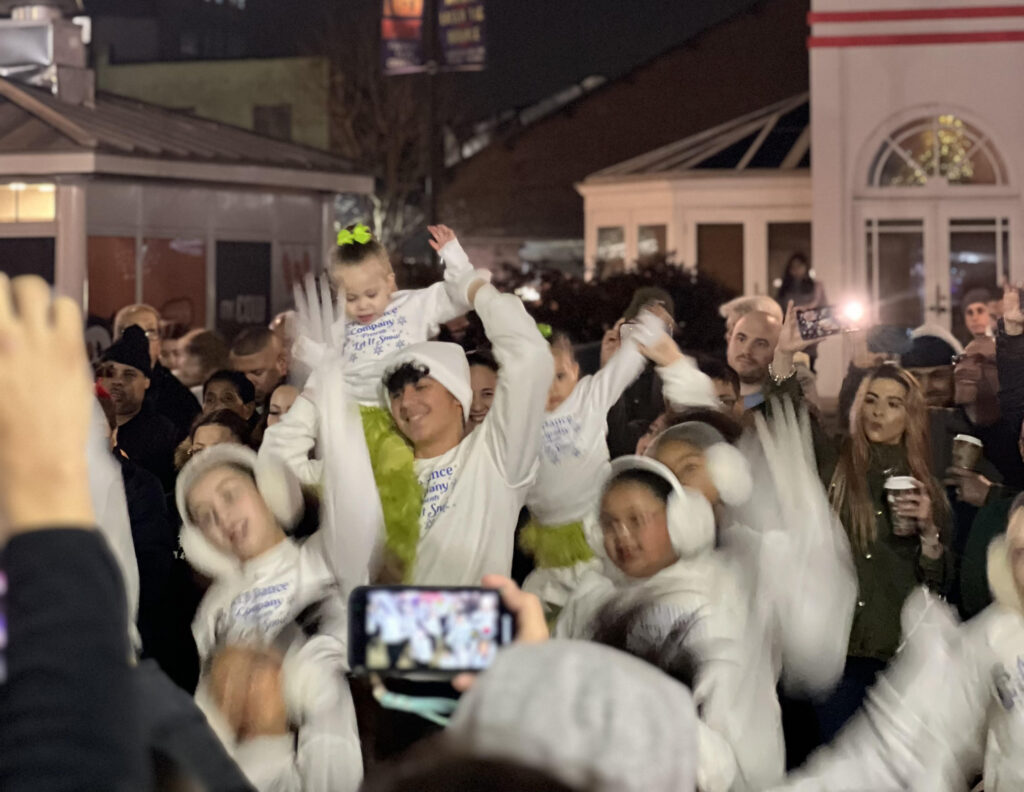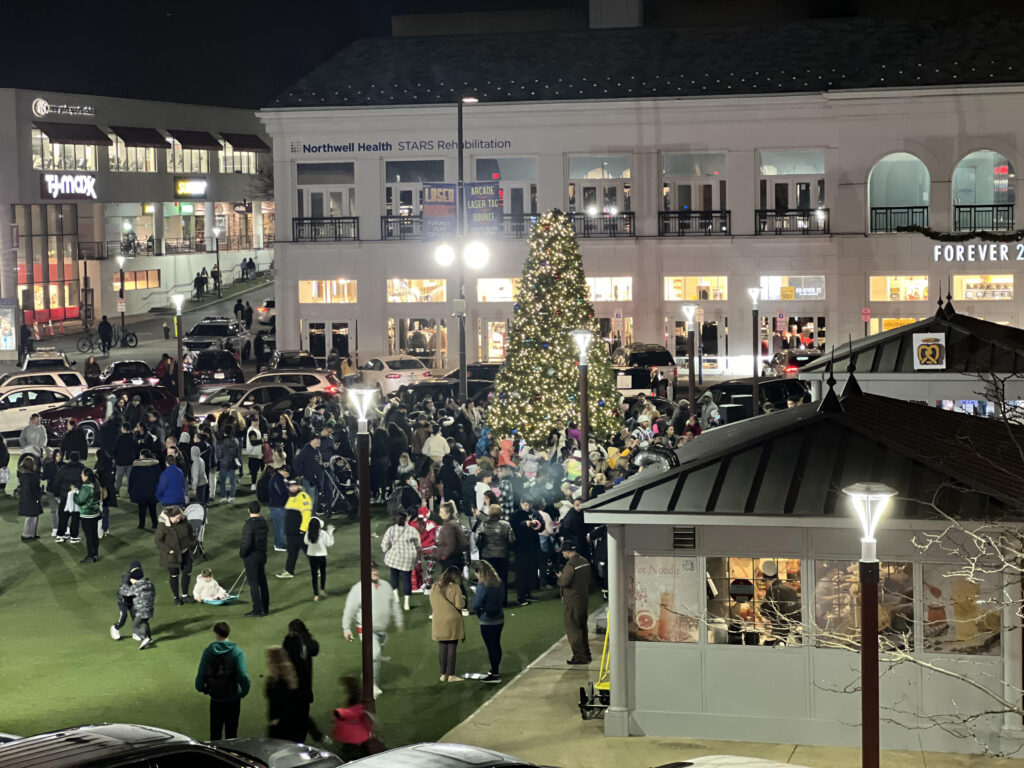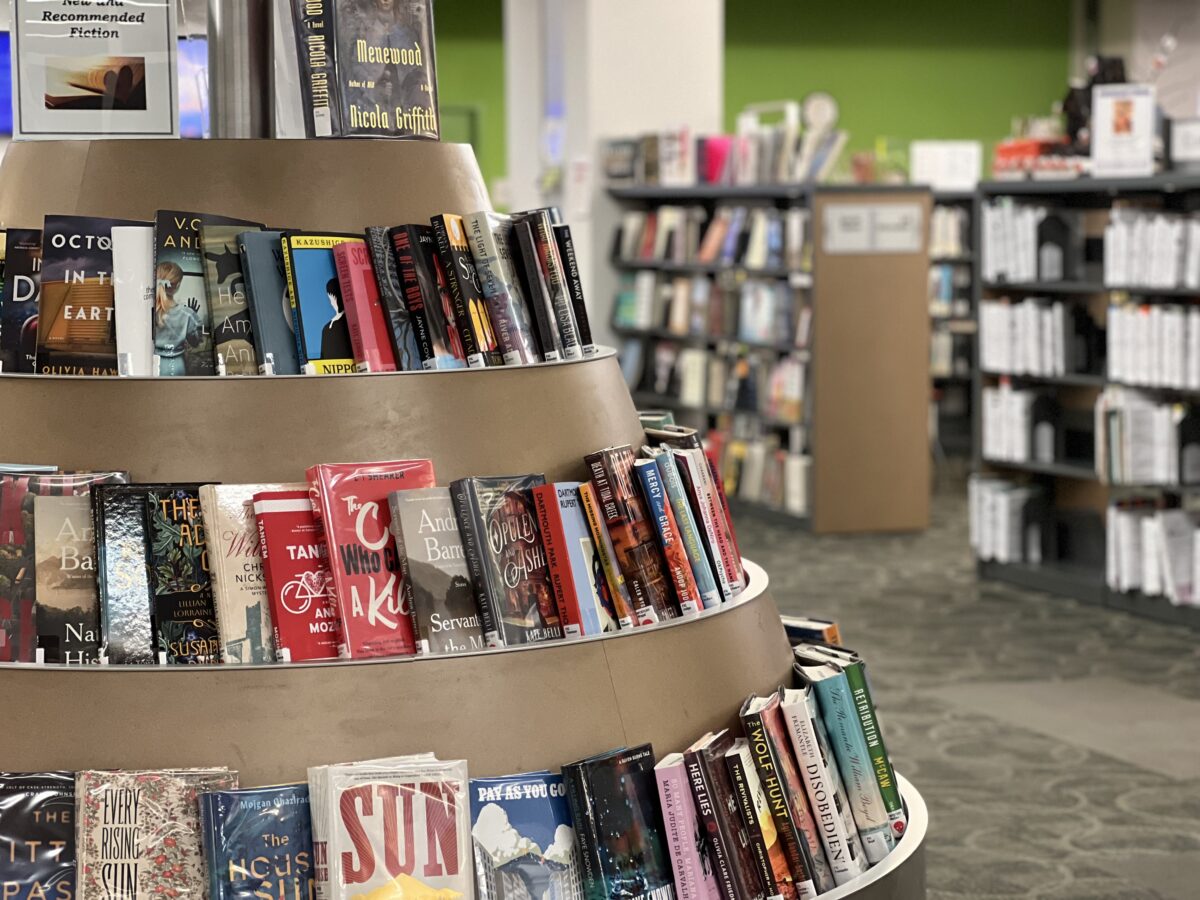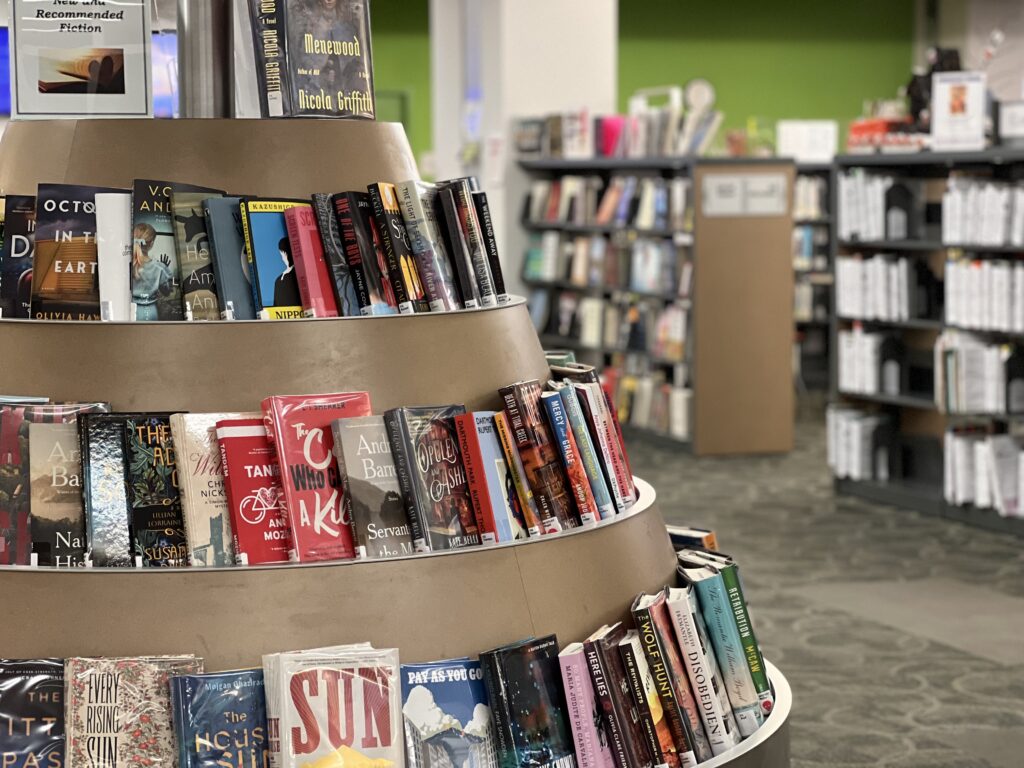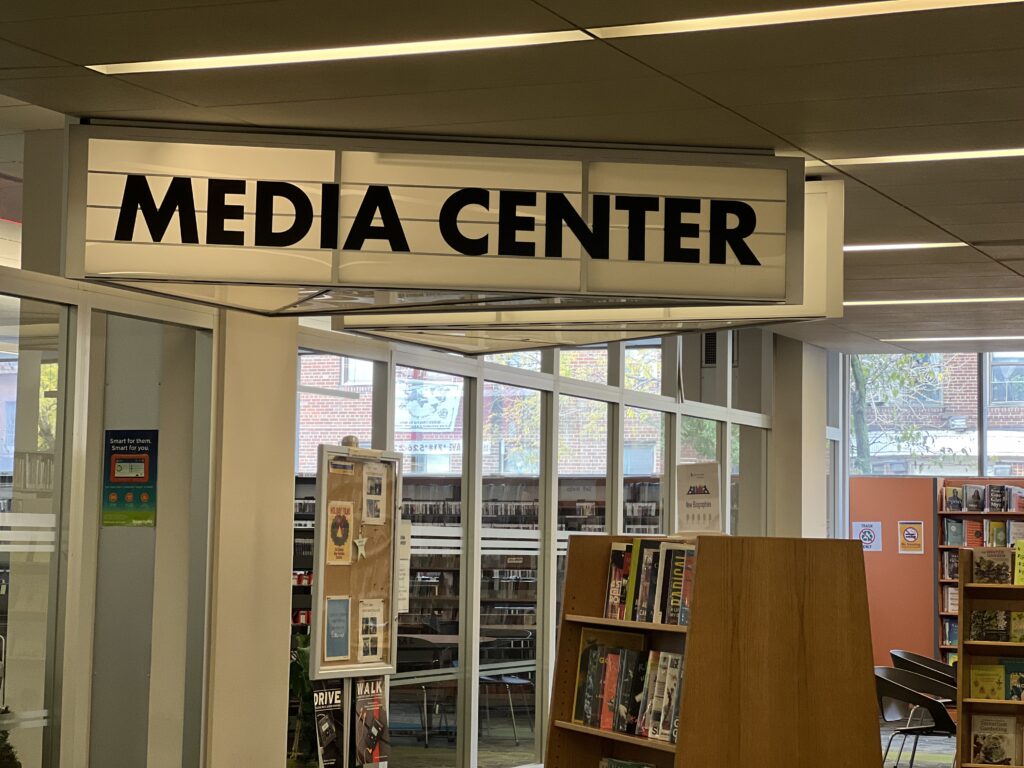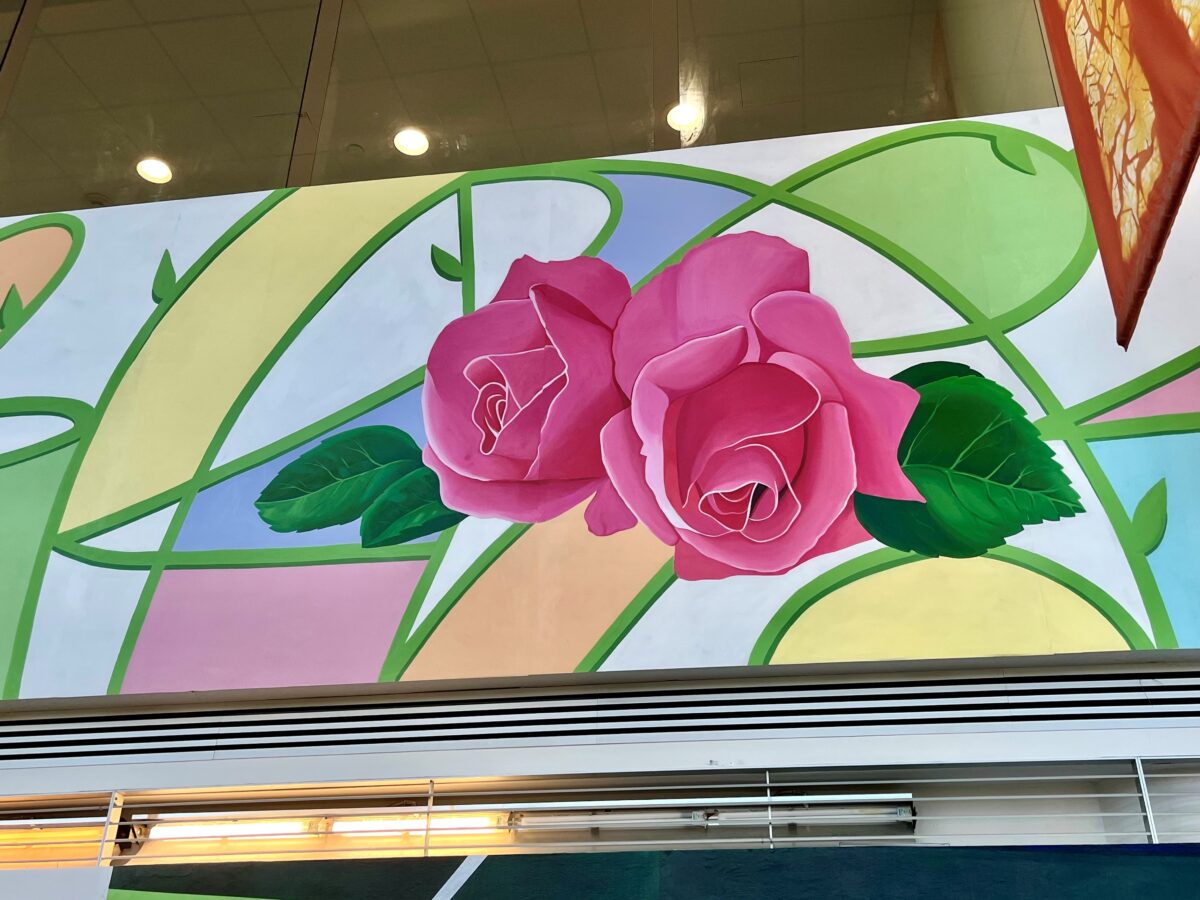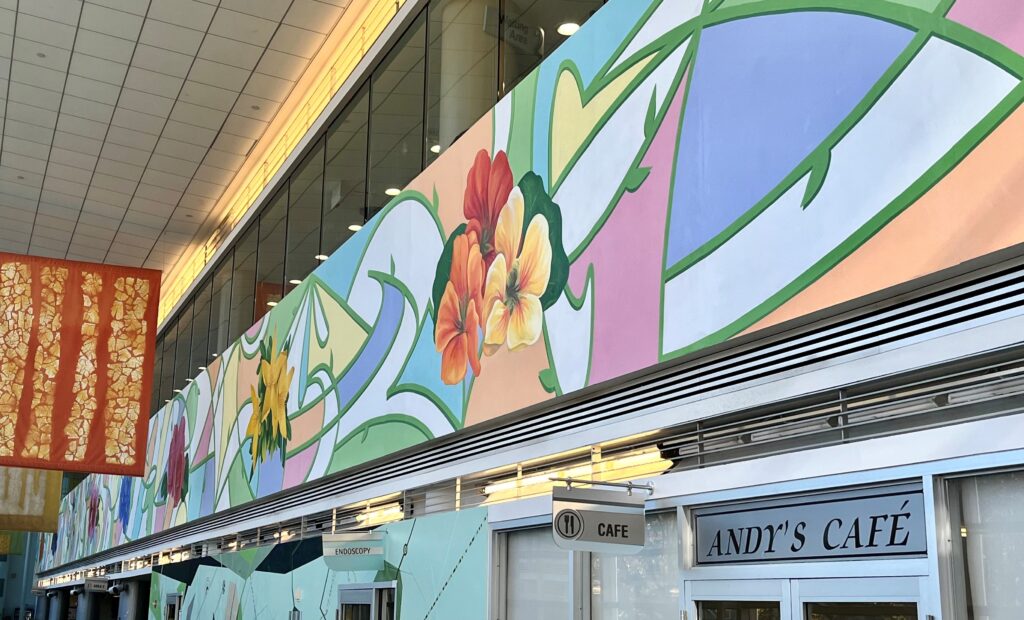14 Injured, Hundreds Displaced After Sunnyside Apartment Fire
By Celia Bernhardt | cbernhardt@queensledger.com
A five-alarm fire broke out at the top floor of 43-09 47th Avenue in Sunnyside on Wednesday. Nearly 200 firefighters battled the blaze for hours throughout the early afternoon.
Crowds gathered in the street, watching plumes of smoke rise from the sixth floor as the FDNY, Red Cross, EMS and other agencies responded to the scene. Residents from the building wore Red Cross shock blankets, some carrying their pets in travel cages.
The six-floor, 108-unit residential building sustained heavy damage from the blaze. At least 14 individuals were injured, with none in life-threatening condition. Several victims, along with a firefighter in serious but stable condition, were transported to nearby hospitals.
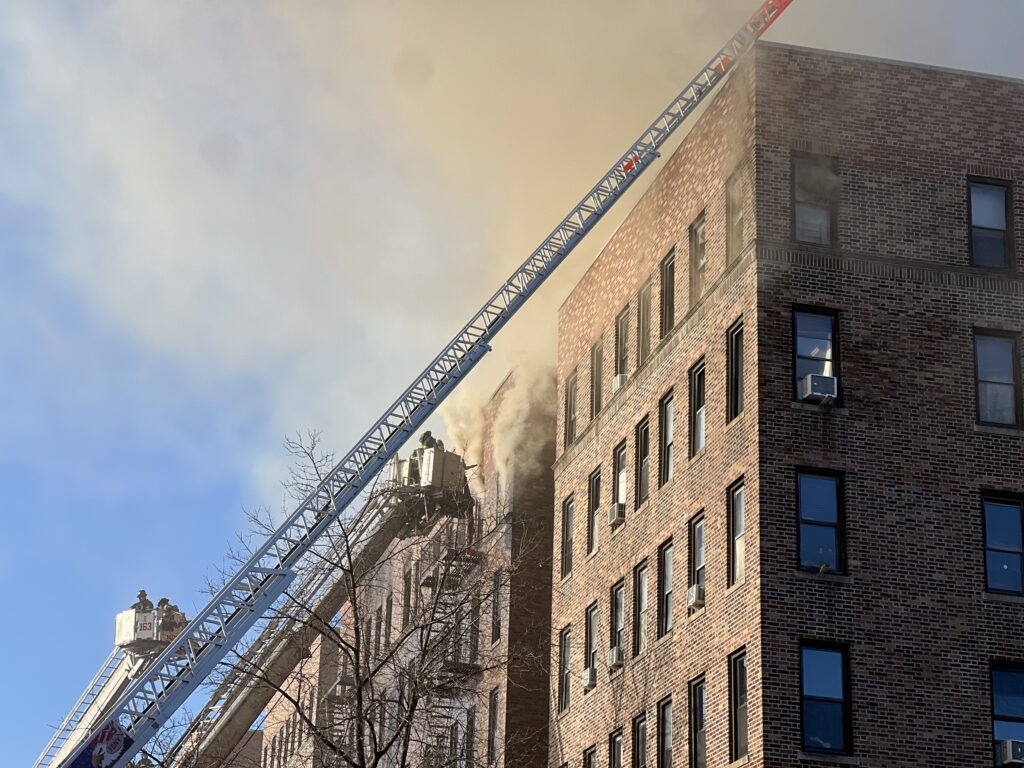
Firefighters battled the blaze for hours. Credit for all photographs: Celia Bernhardt
Approximately 450 residents could be displaced from the fire and water damage, FDNY Department Chief and Incident Commander Tom Currao said at a press conference.
“I was asleep, and my roommate comes in frantic and yells my name,” Brittany Maldonado, a 24-year-old resident of the building’s fifth floor, said. “We noticed that our apartment complex is filled with smoke, and we got super nervous. We thought that maybe it was something electrical. We couldn’t see where the smoke was coming from.”
Maldonado said she and her neighbors went up to the sixth floor.
“You could see major smoke coming out of two or three of the apartments, but really one of the doors was major smog, like black smoke,” she said. “I don’t know if the apartment was vacant or if just nobody was home, but a bunch of people were knocking. The super was up there knocking on the door, and nobody would open the door.”
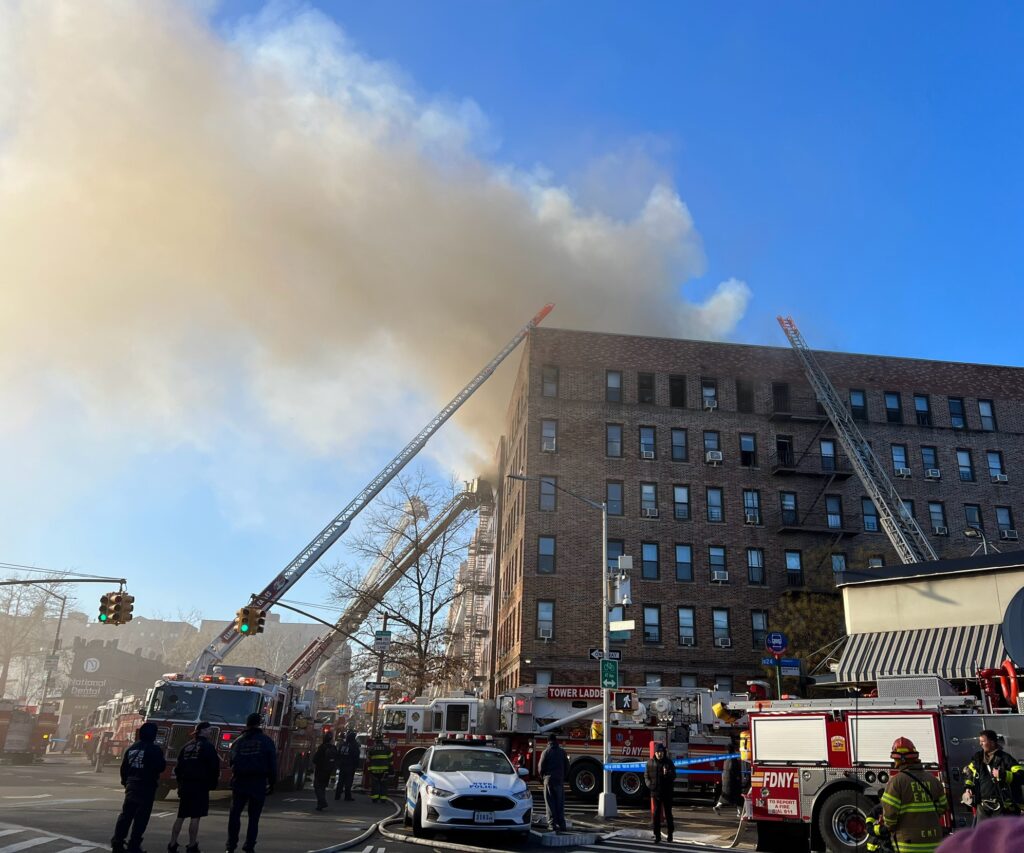
Diego Garzon, the building’s superintendent, said a tenant called him on the phone between 11 a.m. and noon to inform him about the smoke.
“I went right away to the sixth floor and saw smoke coming out of it,” he said.
Currao said at the press conference that the FDNY received notification around noon of a four-alarm fire at the top floor of the building.
“We were met with a heavy fire condition; it quickly escalated through the alarms,” Currao said. “We had to call a fifth alarm as well as additional units.”
The department used six tower ladders and six hand lines at the height of the blaze.
“On our floor alone there’s two elderly women who are in wheelchairs, so we were trying to evacuate them, helping them down and stuff,’ Maldonado said. “But nobody really knew what was going on until we left the building. And that’s when we saw the fire was way bigger than I think anybody expected.”
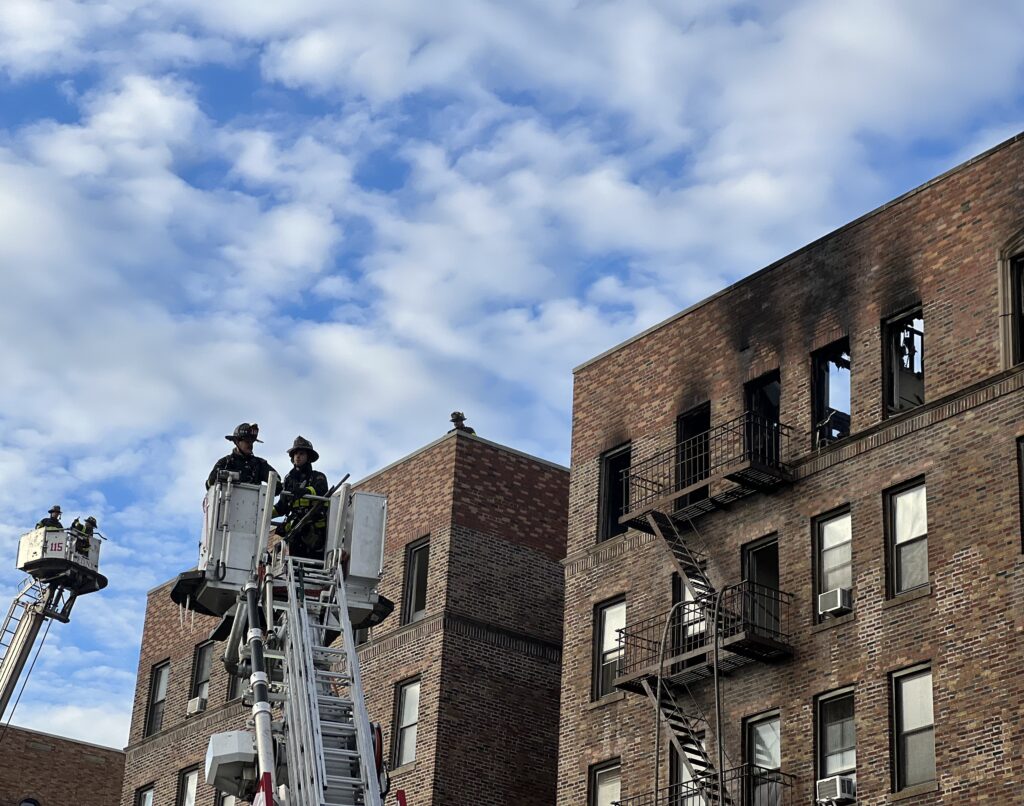
Damage is extensive throughout the building.
Maldonado said that the fire alarms she heard were quieter than she would have expected.
“I just heard a little fire alarm, but I feel like I’ve heard louder fire alarms in school,” she said. “Like, I remember being in college and those fire alarms were way louder than the ones going on in the building.”
“I was just really in a panic, I wasn’t really thinking, I was so scared, and I didn’t really know what was going on,” Maldonado continued. “I didn’t know if it was coming from my apartment building, from the people across the way, if it was something electrical, if it was a gas fire—there were a lot of things being said, like ‘it was a fire on the roof,’ ‘it was in somebody’s apartment’—it was just a little bit of chaos.”
The cause of the fire is still under investigation.
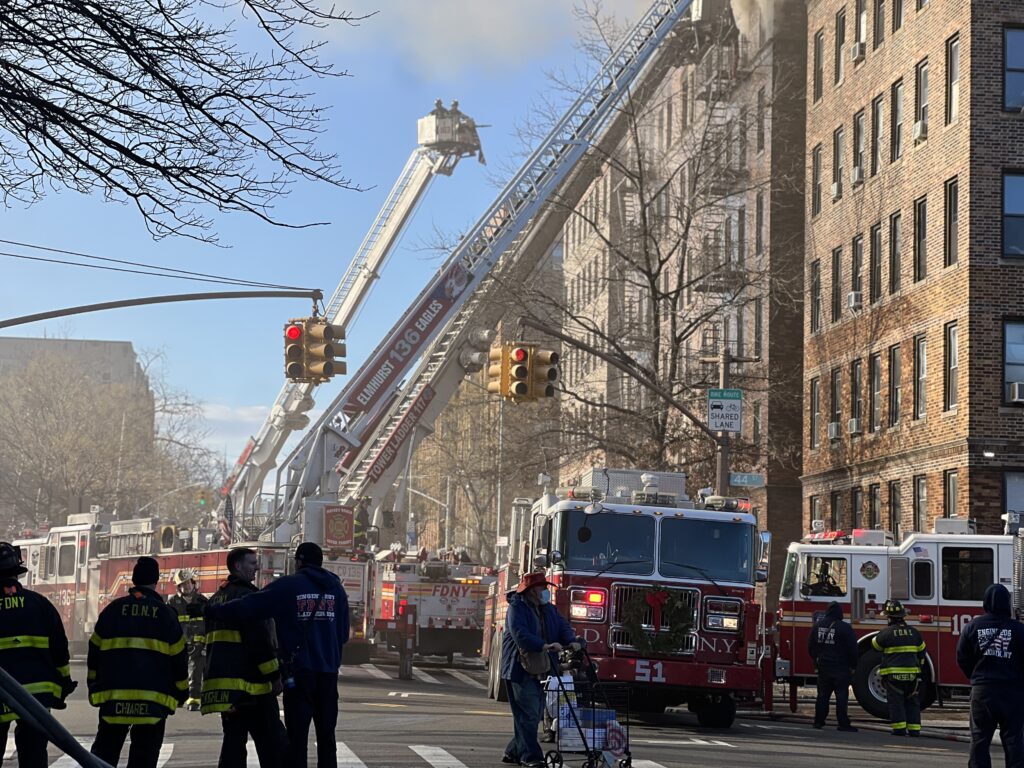
The Red Cross is offering assistance to building residents at the nearby Children’s Lab School, where they have set up a reception center.
“I’ve been here for more than 30 years in the building. Over the 30 years, we never had this happen,” Garzon said.
Maldonado said that many residents have called the Sunnyside building home for years.
“They’re friendly. They’re like family members to one another,” she said. “This is really their home, and they’re like the backbone of the community. So I really hope that they’re able to help them out, give them a place to stay, things that they need.”
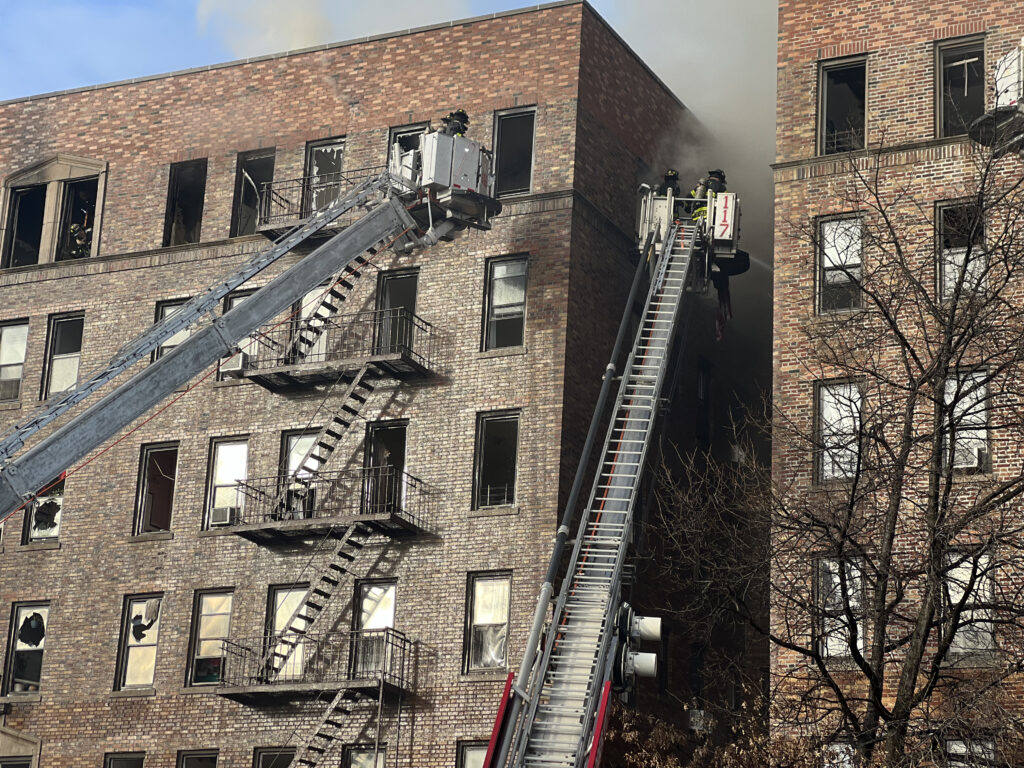
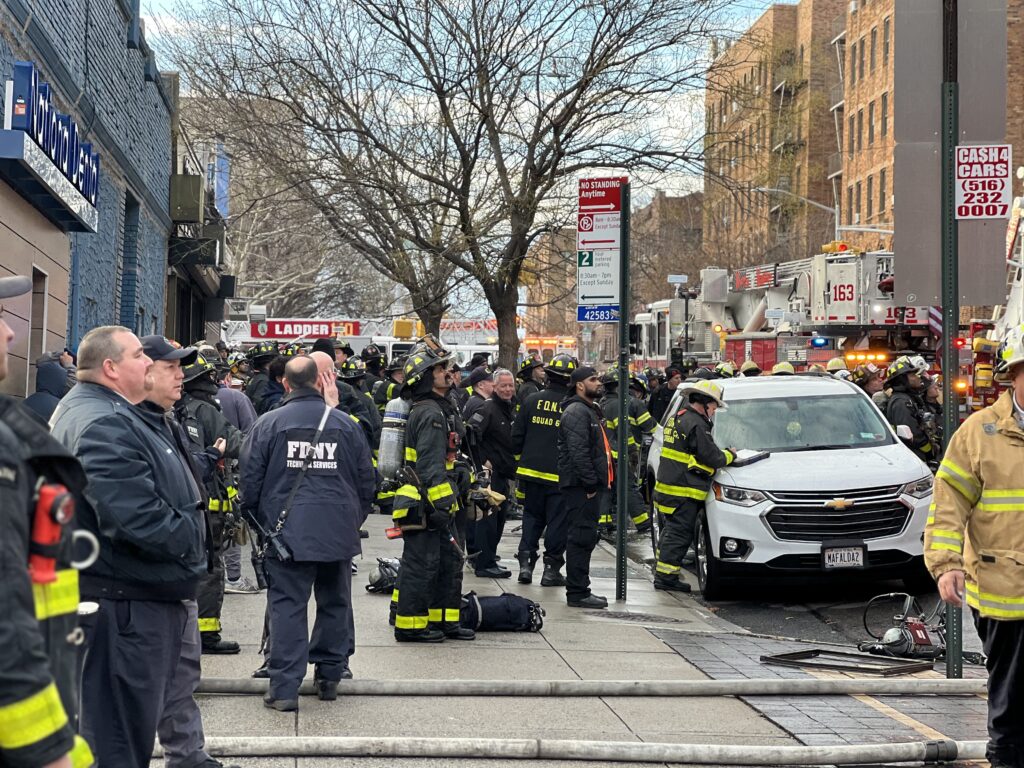
Hundreds of emergency personnel responded to the flames.


